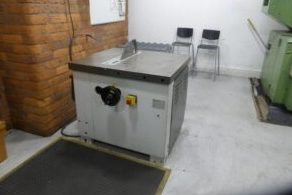How Poor Fire Safety Can Burn Your Business

Fire safety is an aspect of business operations that is easy to overlook when things are running smoothly, but failing to prioritise it can have catastrophic consequences. From large corporations to small businesses, inadequate fire safety preparations and procedures can lead to tragedy, loss and even the destruction of a company. By understanding the fire risks, putting appropriate precautions in place, and ensuring staff are properly trained, businesses can reduce the chances of fire and minimise damage should one occur.
The Threats to Life and Limb
The most obvious risk from fire in a workplace is to the safety and health of staff and visitors. UK fire statistics show there are around 22,000 workplace fires each year. Fires can spread rapidly, releasing toxic fumes and creating disorientation. Insufficient escape routes, poorly maintained or missing fire exits, and locked or blocked fire doors dramatically increase the dangers posed. Even a small fire can generate smoke that renders people unconscious before they can evacuate. Safety must be the number one priority.
The Risk of Property Damage and Financial Loss
Businesses also face the very real risk of premises and property damage from fires. The effects can range from moderate smoke logging and water damage after a minor fire, up to destruction of buildings, fixtures and inventory. The average commercial property fire causes tens of thousands of pounds worth of damage and disruption. Fires that take hold and engulf businesses can destroy everything; buildings needing demolishing and rebuilding, all contents and stock incinerated, the business left literally in ashes. Even with insurance, this can spell the end of that business forever.
Reputational Harm and Legal Consequences
Reputation and trust can also suffer irreparable harm after a significant workplace fire. Images of flames ravaging recognisable business premises generates bad publicity that persists in people’s minds, regardless of who was at fault. It can stigmatise brands, undermine stakeholder confidence, and tarnish perceptions of competence or safety standards. Lawsuits from injured parties or claims of negligence are another consequence that creates lasting ill-feeling towards an organisation.
Precautions You Should Take
Implementing proportionate control measures helps manage the risks efficiently and effectively. Necessary precautions differ between sectors and sites but typically include:
- Installing and properly maintaining fire alarms
- Having clearly mapped escape routes with emergency lighting
- Providing the correct type and number of fire extinguishers
- Ensuring good building compartmentation to slow fire spread
- Properly storing and using flammable substances
- Banning or tightly controlling smoking on the premises
Equally important are good management policies like regular fire risk assessments and staff training, fire drills and evacuation practice, control of ignition sources and combustibles, reporting near misses and non-compliances, upkeep of fire doors, signage and escape routes.
The final vital component is engendering a culture of fire safety among staff. Encourage employees to take it seriously through engagement and leading by example. Make sure everyone understands their role if a fire occurs. This can be the difference between evacuation or rescue attempts being executed promptly and effectively or descending into costly chaos.
In recent years, tragedies like Grenfell Tower demonstrate the awful potential consequences of deficient fire safety. Staying on top of legal obligations and best practices when it comes to fire safety is essential insurance against disaster.







